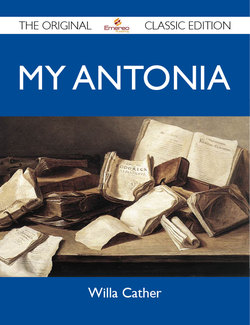Описание книги
When Willa Cather was writing My Antonia, she visited her friend, the journalist and war correspondent Elizabeth Sergeant, grabbed an old apothecary jar filled with flowers, set it in the center of an antique table, and explained: I want my new heroine to be like this–like a rare object in the middle of a table, which one may examine from all sides. . . . I want her to stand out–like this–like this–because she is the story. <p> This anecdote (recounted in James Woodresss biography of Cather) sums up almost exactly the technique that makes her novel both unique and unusual. Instead of writing the story from her heroines point of view, or from the point of view of an omniscient narrator, Cather instead creates a bystander, the likeable and somewhat innocent Jim Burden, who has written down a series of memories where his and Antonias lives intersect; My Antonia is a biography through the mask of autobiography. While this is Jims story as much as it is Antonias (she is barely mentioned at all in Book III), we are ultimately studying a much-loved thing of beauty from all sides–from the distance separating it and the observer. <p> Although My Antonia relates a number of exciting, sentimental, horrifying, and even scandalous incidents (none of which will be divulged here), Cather very deliberately chose to write a character novel rather than an action story. Many of the books pivotal events happen offstage; we learn what has happened only when Jim hears about Antonia or runs into her at a gathering or stops by her home. Such a detached approach is a departure from that used by many of the American naturalists (e.g., Dreiser, Lewis) writing during this period, yet her book is surely a model of realism. As Jim writes when he notes his reluctance to visit Antonia when they are both grown, Some memories are realities, and are better than anything that can ever happen to one again. <p> As with all of Cathers novels, the prairie town of Black Hawk (which, is of course, Cathers hometown of Red Cloud), is populated with a variety of hirelings and homesteaders, dreamers and pretenders, romantics and scoundrels. (Cather seldom sketched a character as downright wicked as the would-be rapist Wick Cutter.) But none of the townsfolk outshine either the affectionate, if platonic, rapport between Jim and Antonia or the unforgettable portrayal of Antonia herself.
